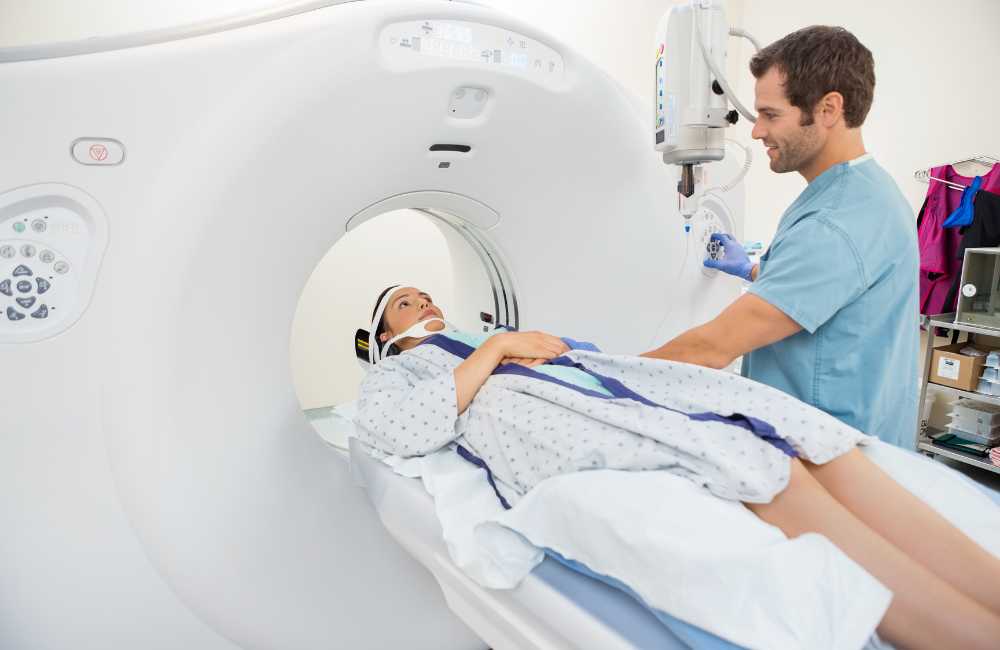Nosebleed, medically called epistaxis, is blood loss from the tissue inside the nose. This is a common occurrence and rarely a cause for concern. About 60% of people will have at least one nosebleed in their lifetime. This is one of the most common emergencies in the ENT unit.
To understand nosebleeds, it’s important to know a little about the anatomy of the nose. The nose has a very rich blood supply (full of tiny, delicate blood vessels close to the surface of the lining of the nose) this allows it to effectively change humidity and temperature of inspired air
The nose receives blood supply from both the internal carotid (anterior ethmoidal artery, posterior ethmoidal artery) and external carotid arteries (Sphenopalatine artery, Greater palatine artery,Superior labial artery)
In addition to the rich blood supply, these arteries form anastomosis (connect). This is particularly prevalent in the anterior portion of the nose.
This watershed area of these five vessels in the anterior nasal septum is called Kiesselbach’s plexus or little’s area and the mucosa over the septum is especially thin, thus making it the target for injury and can become damaged and bleed relatively easily.
What is Nosebleed?
A nosebleed is loss of blood from the tissue lining the nose. Bleeding most often occurs in one nostril only. Most nosebleeds are benign, self-limiting, and spontaneous, but some can be recurrent. Many uncommon causes are also noted.
Nosebleeds can occur at any age, from 2 years to 60 years and are more common in dry, cold climates/dry winter periods.
What Are the Types of Nosebleeds?
Nosebleed is classified based on the site where the bleeding originates viz
-
Anterior Nosebleed
This is the most common. About 90% of anterior nosebleeds are within the Kiesselbach’s plexus (also known as Little’s area) on the anterior nasal septum.
The mucosa over the septum in this area is especially thin, making this the site of the majority of epistaxis
-
Posterior Nosebleed
This is more common in patients on anticoagulants, patients who are hypertensive, and patients with underlying blood dyscrasia or vascular abnormalities. Here, vessels in the posterior or superior nasal cavity bleed.
Causes of Nosebleeds
Nosebleeds are due to the rupture of blood vessels in the nose. The following predisposes people to nosebleeds viz:
- Trauma to the nose.
- Nose picking.
- Nasal/sinus infections.
- Mucosal irritations.
- Inflammatory Diseases.
- Allergic Rhinitis.
- Hormonal changes in pregnancy.
- Vigorous nose blowing.
- Exposure to warm dry air for a long period.
- Nasal surgery
- High blood pressure.
- Tumour and inherited bleeding.
- Alcohol Abuse
- Use of blood thinning medications.
- Presence of foreign body in the nose.
- Hole in the nasal septum.
- Overuse of decongestant nasal sprays
- Oxygen treatment through nasal cannulas
- Snorting cocaine
Signs/symptoms
- Bleeding from the nose is the commonest presentation.
- Evidence of intravascular volume depletion
-
- Dizziness.
- Fainty and weakness.
- Tachycardia (Fast heart rate).
- Hypotension (Low blood pressure).
Investigations for Nosebleed
To investigate epistaxis, routine laboratory testing is not required. Patients with symptoms or signs of a bleeding disorder and those with severe or recurrent epistaxis should have the following viz:
- Complete blood count (CBC).
- Group or type and cross-match.
- Coagulation studies.
-
- PTT (Partial thromboplastin time)
This measures the time it takes blood to form a clot. Values can vary between laboratories but 25 to 35 seconds is considered normal. PTT measures the integrity of the intrinsic system (Factors XII, XI, VIII, IX) and common clotting pathways.
An abnormal (too long) PTT result may also be due to:
-
-
- Bleeding disorders are a group of conditions in which there is a problem with the body’s blood clotting process
- Disorder in which the proteins that control blood clotting become overactive (disseminated intravascular coagulation).
- Liver disease.
- Difficulty absorbing nutrients from food (malabsorption).
- Low level of vitamin K.
- PT (Prothrombin time)
-
The prothrombin time, sometimes referred to as PT or pro time, is in evaluating blood clotting. Prothrombin is a protein produced by your liver. It is one of many factors in your blood that help it to clot appropriately.
It evaluates the presence of factors VII, V, and X, prothrombin, and fibrinogen. A prothrombin time normal range is within 11 -15 seconds. A prolonged prothrombin time indicates a deficiency of the above clotting factors.
- CT scan of the nose and sinuses or entire facial structures.
Imaging such as x-ray or computed tomography has no role in the urgent or emergent management of active epistaxis.

- Nasal endoscopy (examination of the nose using a camera at the end of a short tube).
- Toxicology screen (screening for drug abuse).
Diagnosing Nosebleed
This is done by the following viz:
-
History
The history should include duration, severity, frequency and laterality of the bleed, inciting event, and interventions provided before seeking care. Inquire about anticoagulants, aspirin, Non-steroidal anti-inflammatory drugs (NSAID), and topical nasal steroid use. Obtain a relevant family history, particularly relating to coagulopathy and vascular/collagen disease, as well as any history of drug and alcohol use.
-
Physical Examination
Have the patient in a seated position in an exam chair in a room with suction available. A speculum is carefully inserted and slowly open the blades to visualize the bleeding site. A headlight is essential to allow for hands-free illumination, and blood/clots may need to be suctioned from the nasal cavity to identify the bleeding source.
A posterior nosebleed is not easy to visualize and may be suggested by active bleeding into the posterior pharynx without a visualized vessel on nasal examination. Nasal endoscopy greatly increases the success of identifying the bleeding source.
-
Results of the above-stated investigations
Interpretation of the results obtained may give a clue to the cause of the nosebleed. Usually, the diagnosis of posterior bleeding is made after measures to control anterior bleeding have failed.
Clinical features of posterior bleeding can include active bleeding into the posterior pharynx in the absence of an identified anterior source; high-flow posterior bleeds may cause blood to emanate from both nares.
Nosebleed Treatment
Treatment for nosebleeds will vary depending on the type and cause of the nosebleed.
-
General Measures
If there is a hemodynamic compromise, intravenous fluid (infusion of crystalloid) or blood transfusion is done.
-
Anterior Nosebleed
Here, the bleeding is coming from the front of the nose, usually from the little’s area.
-
- Home Treatment
Doing the following can treat anterior nosebleeds. While sitting up, squeeze the soft part of the nose, making sure that the nostrils are fully closed. Keep the nostrils closed for 10 minutes then lean forward slightly, and breathe through your mouth.
Release the nostrils after 10 minutes and check to see if the bleeding has stopped. Repeat this step if bleeding continues. Please, don’t lie down when trying to stop a nosebleed. Lying down can result in swallowing blood and this can irritate the stomach.
-
-
- A cold compress can also be applied over the bridge of the bleeding nose.
- The nasal decongestant spray may also be used to close off the small blood vessels.
-
If bleeding fails to stop, then consider seeing your GP for a proper evaluation.
-
- Hospital Management
-
-
- If this fails a cotton pledget impregnated with a vasoconstrictor (e.g., phenylephrine 0.25%) and a topical anaesthetic (e.g., lidocaine 2%) is inserted and the nose pinched for about 10 minutes.
- The bleeding point may then be cauterized with electrocautery or silver nitrate on an applicator stick. Cauterizing 4 quadrants immediately adjacent to the bleeding vessel is most effective. Care must be taken to avoid burning the mucous membrane too deeply.
- As another alternative, an anterior nasal pack consisting of 1 cm (½ in) petrolatum gauze may be inserted; up to 175 cm (72 in) of gauze may be required. This procedure is painful, and analgesics usually are needed; it should be used only when other methods fail or are not available.
-
-
Posterior Nosebleed
In this situation, bleeding is coming from the posterior aspect of the nose. The blood also tends to flow from the back of your nose down your throat. Posterior nosebleeds are less common and often more serious than anterior nosebleeds.
Posterior bleeding may be difficult to control. Commercial nasal balloons are quick and convenient also a posterior gauze pack is effective but more difficult to position. Both are very uncomfortable so sedation and analgesia may be needed and hospitalization is required.
-
- If a foreign object is a cause, your doctor can remove it.
- For persistent nosebleeds, a medical technique called cauterization can be used in stopping bleeding. This involves burning the blood vessels in the nose with either a heating device or silver nitrate, a compound used to remove tissue.
- The nose may be packed with cotton, gauze, or foam. A balloon catheter may also be to apply pressure to the blood vessels to stop the bleeding.
- On occasion, the internal maxillary artery and its branches may be ligated to control the bleeding. This is done with clips using endoscopic or microscopic guidance and a surgical approach through the maxillary sinus (internal maxillary) or trans-nasal endoscopic approach (sphenopalatine). Alternatively, angiographic embolization may be done by a skilled interventional radiologist. These procedures, if done in a timely, may shorten hospital stays.
- Large amounts of blood swallowed by the patient with nasal bleeding may pose a problem to patients with severe liver disease and should therefore be eliminated promptly with enemas to prevent hepatic encephalopathy. The gastrointestinal tract should be sterilized with nonabsorbable antibiotics (e.g., neomycin 1 g orally 4 times a day) to prevent the breakdown of blood and the absorption of ammonia.
How to Prevent Nosebleed
There are several ways to prevent nosebleeds.
- Use a humidifier in your house to keep the air moist.
- Avoid picking the nose.
- Limit aspirin use. This can thin the blood and contribute to nosebleeds. Please discuss this with your doctor first.
- Use nasal decongestants and antihistamines in moderation. These can dry out the nose.
- Use a saline spray or gel to keep the nasal passages moist.
- Regular Blood pressure checks.
Conclusion
Nosebleeds are common and not usually serious. Most are anterior nosebleeds and can often be treated at home. These usually occur suddenly and don’t last long.
A posterior nosebleed can be more serious. If you suspect a posterior nosebleed, contact your doctor immediately or report to the ER for a proper evaluation.

